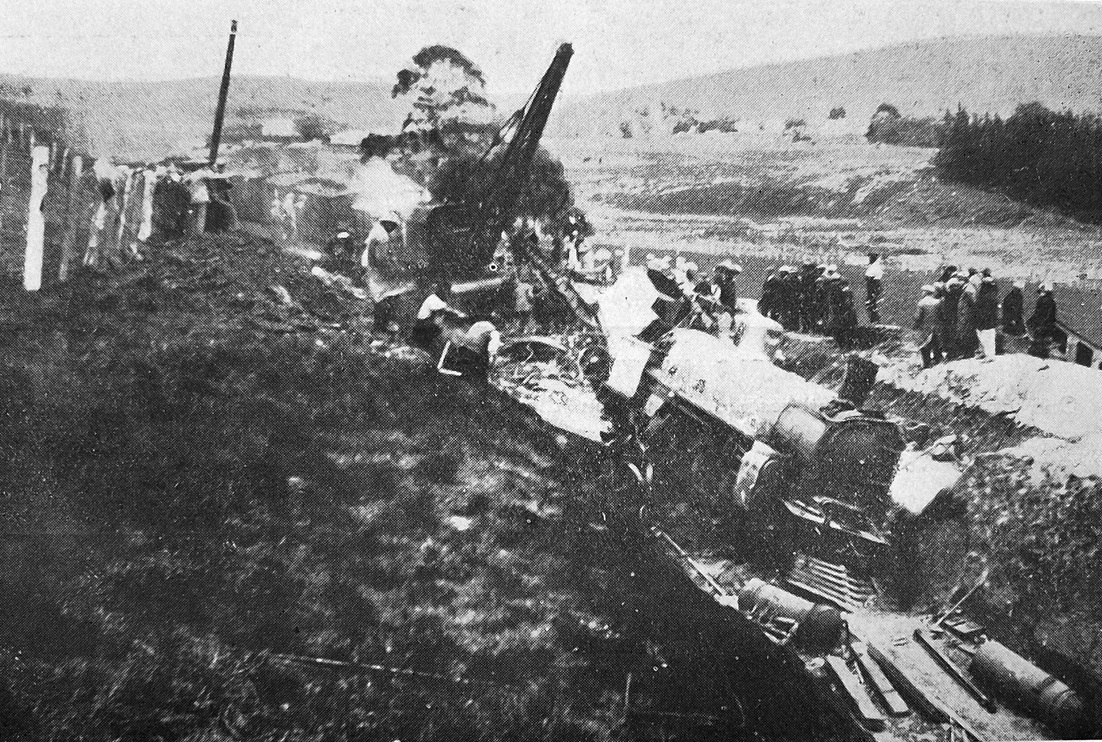

As one approached Poukawa the sight of a great cloud of smoke rising from the hills beyond left no doubt in the minds of those hurrying to the spot that something serious had happened. There at the top of the rise, beyond the little Maori settlement of Opapa, lay the crippled engine and the broken carriages, two of them already fiercely burning. Scattered about the fields lay the injured people.
Within a few minutes of the smash two carriages were on fire. The heat from them was terrible, and it was only a matter of a few more minutes before a third carriage had been devoured in flames; then the carriage on the bank became alight to complete the tally of four. As soon as possible after the accident happened the uninjured carriages were detached and pushed out of the danger zone. A fifth carriage seemed to be in danger of fire, and a relief gang decided its fate, and it was quickly chopped clear, and was able to go unhurt.
Whatever good fortune intervened to prevent a greater cost of life would appear to be in the remarkable circumstances that the coupling between the first and second carriages snapped cleanly, and allowed the remaining six carriages to career downhill, and so to evade telescoping on the front of the train. However, the freed carriages did go more than a few yards past the engine, when they, too, left the rails, and crashed into the right side of the cutting.
The fireman (Mr Donovan) states that his impression of the accident was that as the first bend was being negotiated the engine swayed dangerously and crashed into the side of the cutting on the left of the rails, the fireman being thrown out through the window.
The passengers whose opinions were asked expressed the view that the speed of the train was greatly beyond that what was in any degree a cautious one. A traveller in speaking to a reporter said: "The speed of the train after we left Waipukurau was terrific. In fact, it was so great at one point some distance before Opapa that my wife and I timed it with a stop watch, and its speed between two mile posts was 50 miles an hour.". It was also stated by several passengers that women travellers especially showed frequent signs of nervousness, and he adds: "They might well do so, for the pace on such a stretch of the line was outrageous." Those views were typical of nearly all.
Fireman Donovan won the admiration of all by his cheerfulness and energy. "I want you to put something in your paper about that fireman," said a passenger who himself had not escaped injury. "When she struck he was thrown violently out, but he picked himself up and pulled out his mate, who was buried up to the hips. He was then among the first to get out the injured passengers, and kept going until all the carriages were cleared." — ODT, 24.9.1925
Compiled by Peter Dowden











